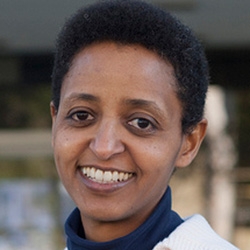
Date:
Location:
Title:
abstract
Ceria and its derivatives find use in a wide variety of technologies from traditional applications in solid oxide fuel cells, catalysis, and electrochemical sensors, to new applications in computing, medicine, and water splitting. The suitability of ceria for these many applications derives in part from the redox flexibility of the material, with the predominantly Ce4+ ion adopting the 3+ oxidation state under conditions amenable to external control. The very high oxygen ion transport in suitably doped ceria is a second critical factor driving its technological value. Here we present recent results highlighting transport and redox activity in the (i) bulk, (ii) grain boundary, and (iii) surface regions of ceria. In the case of ceria-zirconia solid solutions we show that with increasing Zr content the bulk oxygen vacancy concentration increases, but the fraction of Ce ions in the 3+ oxidation state dramatically decreases (although in all cases it is higher than in the bulk). Concomitantly, the bulk diffusivity and surface reaction rate constant decrease, again, despite the increased oxygen vacancy concentration. In lightly Sm doped ceria, we examine transport across internal grain boundaries. Using a combination of electron holography and atom probe tomography, we show that even exceptionally pure ceria materials have Si and Al at the internal interfaces and display a positive potential at the grain boundary core, consistent with the incorporation of Si and Al as charge-imbalanced interstitial species. Furthermore, the grain boundary impedance increases with the concentration of these barely detectable impurity species. We attribute the high grain boundary impedance to the positive charge, which depletes the oxygen vacancies in the near-vicinity of the boundaries. These insights suggest new approaches for controlling material behavior for optimal technological characteristics.
bio
Sossina M. Haile is the Walter P. Murphy Professor of Materials Science and Engineering at Northwestern University, where she also holds appointments in Applied Physics and in Chemistry. She assumed her position at Northwestern University in 2015 after serving 18 years on the faculty at the California Institute of Technology. She earned her S.B. in Materials Science and Engineering in 1986 from the Massachusetts Institute of Technology and her M.Sc. in the same field in 1988 from the University of California, Berkeley. She returned to MIT to earn her Ph.D. in Materials Science and Engineering in 1992. As part of her studies, she spent two years at the Max Plank Institute for Solid State Research, Stuttgart, Germany, first as a Fulbright Fellow then as a Humboldt Post-Doctoral Fellow. Haile’s research broadly encompasses oxide materials for energy technologies. She has established new classes of fuel cells with record performance for clean and efficient electricity generation, and created new avenues for harnessing sunlight to meet rising energy demands. Amongst her many awards, in 2008 Haile received an American Competitiveness and Innovation (ACI) Fellowship from the U.S. National Science Foundation, the 2012 International Prize in Ceramics of the World Academy of Ceramics, and the 2010 Chemical Pioneers Award of the Chemical Heritage Foundation. Haile is a fellow of the American Ceramics Society, the Materials Research Society, the African Academy of Sciences, and the Ethiopian Academy of Sciences, and serves on the editorial boards of Materials Horizons and Annual Review of Materials Research.
Hosted by Raphaële Clément. Download event flyer.



